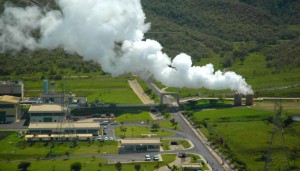
Kenya’s estimated geothermal potential is more than 15,000 MW, according to Geothermal Development Company (GDC). Report by the Thomson Reuters Foundation revealed that Kenya and Turkey are the only two developing nations that have exceeded forecasts for harnessing geothermal energy over the last five years.
During the just concluded 17th East African Power Industry Convention (EAPIC), Kenya Electricity Generating Company (KenGen) was awarded both the outstanding Clean Power Award and Excellence in Power Generation. Their Olkaria geothermal power generation was specifically lauded.
The Olkaria area in Kenya’s Rift Valley is home to the largest geothermal project in Africa, it has a total potential of 2,000 MW. This estimate is almost equivalent to current electricity demand in Kenya.
The great leverage KenGen has exerted on geothermal energy was witnessed when electrical power imports from Uganda was cut by half. In the first half of 2015, Kenya imported 27.97 million kWh of electricity, this is compared to 57.91 million kWh during a similar period in 2014. The sharp slump in power imports by 51.7% was as a result of the Olkaria I geothermal power plant increasing its total capacity to 280 MW at the end of 2014. The connection of the additional power to the national grid necessitated a slice in power import from Uganda.








